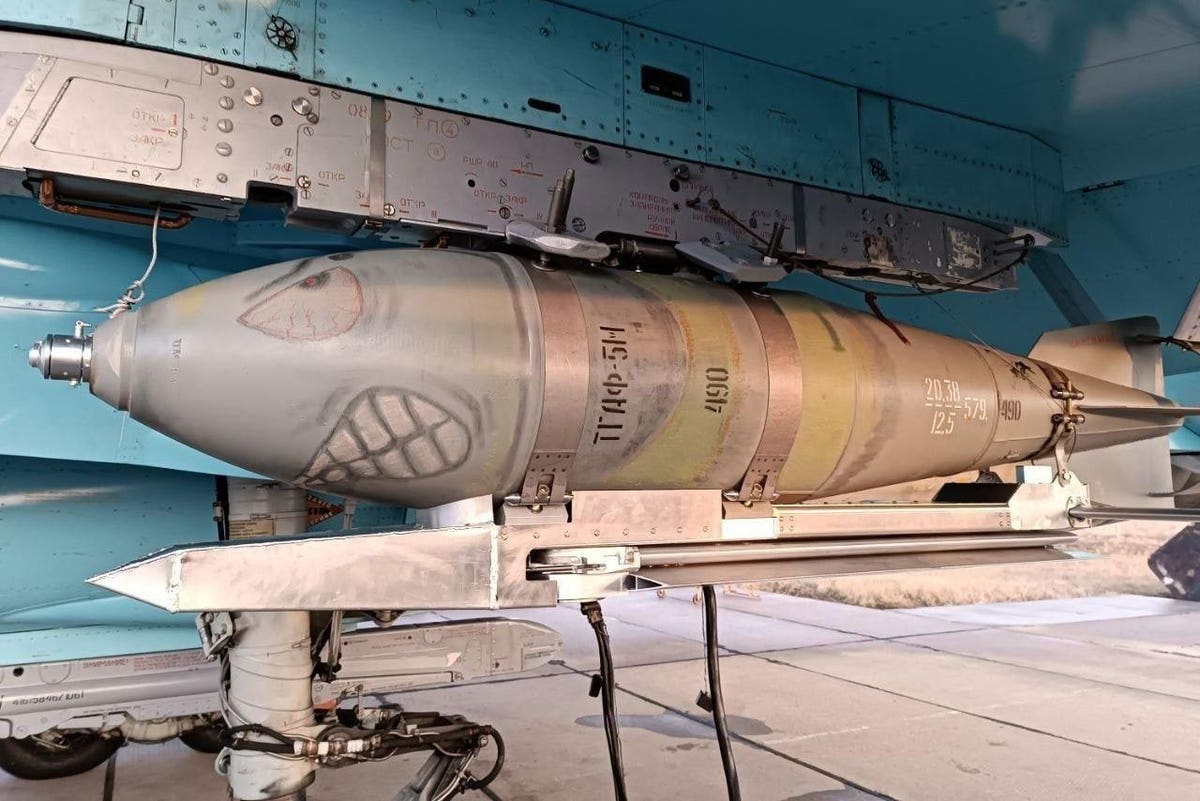The Russian air force went to war in Ukraine with modern warplanes carrying obsolete munitions. And that mismatch immediately was obvious, as factory-fresh Sukhoi fighter-bombers flew directly over Ukrainian air-defenses in order to drop old, unguided bombs.
The Ukrainians shot down the planes by the dozen.
But then something changed. In early March, Russian warplanes employed precision-guided glide-bombs in Ukraine for the first time. Nearly six months later, these winged UPAB-1500 and FAB-500 glide-bombs—which some Ukrainians refer to as “KABs,” referencing an older type of Russian bomb—strike fear in Ukrainian troops.
“KABs are one of the biggest fears,” wrote Ukrainian soldier Olexandr Solon’ko. “The Russians use them extensively. I can’t speak to their accuracy, but the weaponry is powerful.”
For the first year of Russia’s wider war on Ukraine starting in February 2022, stiff Ukrainian air-defenses—dozens of long-range S-300 and medium-range Kub and S-125 batteries plus scores of mobile Buk launchers and many hundreds of shoulder-fired short-range missiles—effectively protected most of Ukraine from Russian attack planes.
A crash program to produce UPAB and FAB glide-bombs altered the aerial dynamic. On or before March 4, a Russian jet tossed what appeared to be a UPAB-1500 glide-bomb at a target in Chernihiv Oblast. “The Russians have … been adapting,” Mick Ryan, a retired Australian army general, wrote in his newsletter.
Chernihiv city lies 25 miles south of the Russian border. It just so happens that a 3,300-pound UPAB-1500—at least a ton of which is warhead—should travel 25 miles or farther if the launching plane releases it at 40,000 feet or higher.
The winged UPABs and FABs, rough analogs of Ukraine’s own American-made JDAM-ER glide-bombs, probably aren’t terribly accurate. The Russian munitions home in on coordinates from the GLONASS satellite-navigation system, Russia’s less-precise version of the American GPS. But the bombs don’t always have to be very accurate when they pack a whopping 2,000 pounds of high-explosive.
Better yet for the Russians, the handmade FAB glide-bombs in particular are cheap. Perhaps costing just a few tens of thousands of dollars apiece. As the glide-bombs proliferate across the Russian air force, more jets are launching their munitions from outside the range of the densest Ukrainian air-defenses. “Bombs are not spared,” Solon’ko wrote.
“They attempt to target logistics and command centers, just as we do,” Solon’ko explained. But cued by Orlan, Zala and Supercam drones, the Russian fighter-bomber crews also aim the glide-bombs at front-line Ukrainian forces, sometimes synchronizing their attacks with explosive-laden Lancet drones.
“The aerial reconnaissance … system [with] Orlan-Zala-Supercam [drones] is effective and causing issues,” Solon’ko wrote. “They identify targets and launch Lancets, releasing them in swarms along with KABs.”
“Forward defenses in settlements are constantly under [attack],” the Ukrainian soldier wrote. “The treeline where one of the crews was operating was simply leveled. Only a palisade remained, and a well-made trench ceased to be usable.”
And when the Russians can’t pinpoint specific Ukrainian positions for bombardment, they’ll just aim the glide-bombs at the roads Ukrainian troops travel to and from the front line. “They don’t hesitate to simply fire on roads.”
Russian forces’ aerial advantage over Ukrainian forces—more and better manned warplanes and a growing fleet of small drones including the explosive Lancets—means Ukrainian positions are under constant surveillance, according to Solon’ko.
“Steppe. Fields, tree lines. Slight elevations and dips, villages, small rivers. Minefields. Whoever you may be, an armored assault group, evacuation team, aerial or infantry reconnaissance, your movement is visible from afar,” Solon’ko wrote.
The escalating danger from Russian glide-bombs helps to explain why Ukraine’s 2023 counteroffensive seems to some observers to be progressing slowly. In more than 10 weeks of hard fighting, the Ukrainians have advanced less than 10 miles along their three most successful axes in southern and eastern Ukraine.
Most recently, a half-dozen Ukrainian brigades led by the powerful 47th and 82nd Brigades liberated Robotyne, a key strongpoint on the road to Russian-occupied Melitopol.
“For those who are overly smart and believe that the Ukrainian armed forces took an incredibly long time to drive the Russians out of the village of Robotyne, they must have missed the defense system that needed to be overcome in order to push the Russians away,” Solon’ko wrote.
Read the full article here





